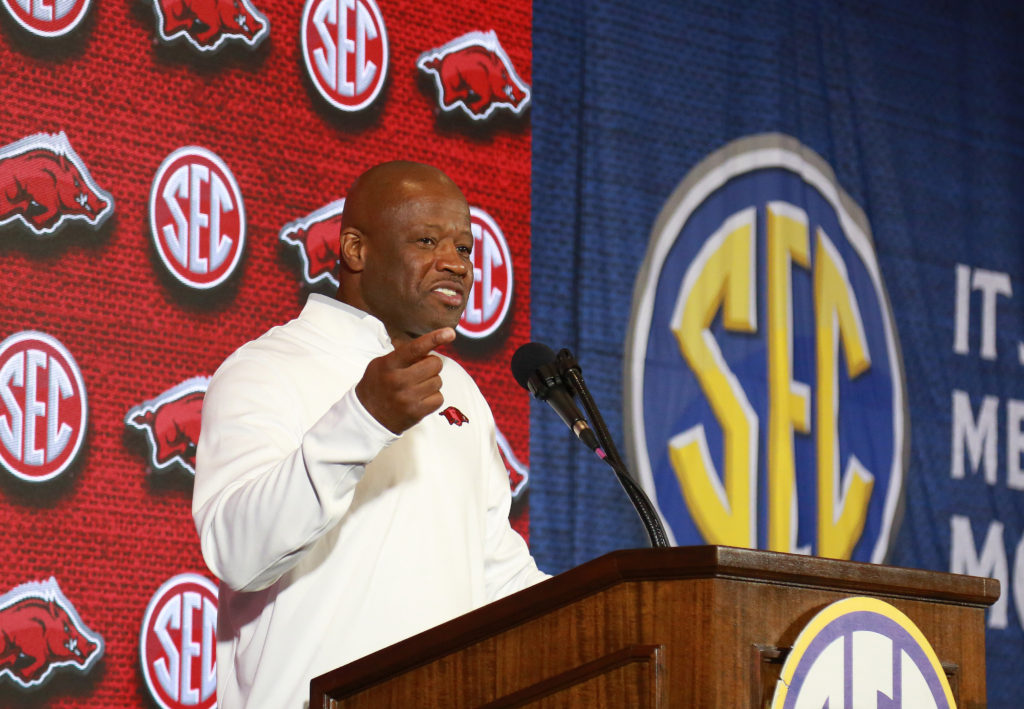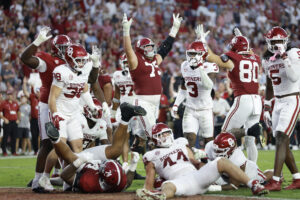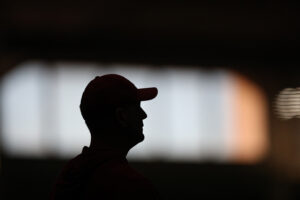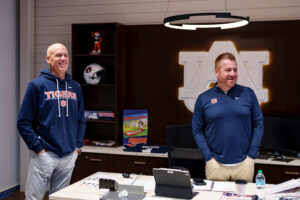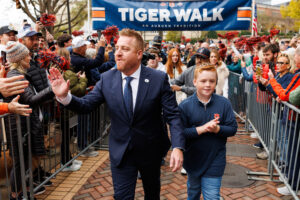Adrio Bailey says that the topic of Arkansas basketball’s 1994 NCAA championship comes up on campus “every day.” And for the last 25 years, we’ve all been waiting on the same spectacular run to come out of Fayetteville.
Arkansas, the same program that cut down the nets and fixed permanent glee on President Bill Clinton’s face, the same program with six Final Four and 11 Sweet Sixteen banners hanging from the rafters of Bud Walton Arena, the same program that averaged more than 28 wins per year from ’88-89 to ’94-95 and unleashed 40 Minutes of Hell (which would eventually merit an hour-long documentary on the SEC Network) has not put together an impressive tournament run since the threat of Y2K.
Arkansas was once a team that got up in America’s face. It was a reflection of its coach: brash, cocky, and plenty good. But after Nolan Richardson’s ouster in 2001, 40 Minutes of Hell became just hell. The program took a step back under Richardson’s successor, Stan Heath, and took another step back during the John Pelphrey era. The program reached a nadir in 2008-09 when it posted a 2-14 conference record.
Once at the forefront of the national hoops discussion, Arkansas has quietly been reduced to a regional program, cloistered away in its Southwestern enclave amid the Ozarks. After nearly two decades of flux, heightened standards no longer exist in Fayetteville to the extent of the early-to-mid-1990s when Corliss Williamson was storming the lane and Scotty Thurman was launching 3s. Along the way, the program seems to have lost something.
This is not to say that Arkansas basketball has not turned out a good product. Since arriving from Missouri in 2011, head coach Mike Anderson has posted a 151-86 overall record and taken the Hogs to the NCAA tournament on three occasions. But certain expectations exist when you’re inexorably linked to Richardson, the winningest head coach in Arkansas history who possessed enough charisma to jump-start a frozen car under a blanket of snow in a Minnesota winter.
Yes, Arkansas basketball is trending in the right direction, but after a 23-12 season (10-8 in SEC) in 2017-18, the Hogs began bleeding personnel. Spiriting off to the NBA were guards Jaylen Barford (17.9 ppg) and Daryl Macon (16.8 ppg), a fierce backcourt tandem that produced over a third of the Hogs’ offensive punch. Then Anton Beard graduated, taking his 9.5 ppg with him. Now Arkansas is looking for an identity, and Anderson faces the undesirable tag of “rebuilding year” with the hope that a big recruiting class can pay big dividends.
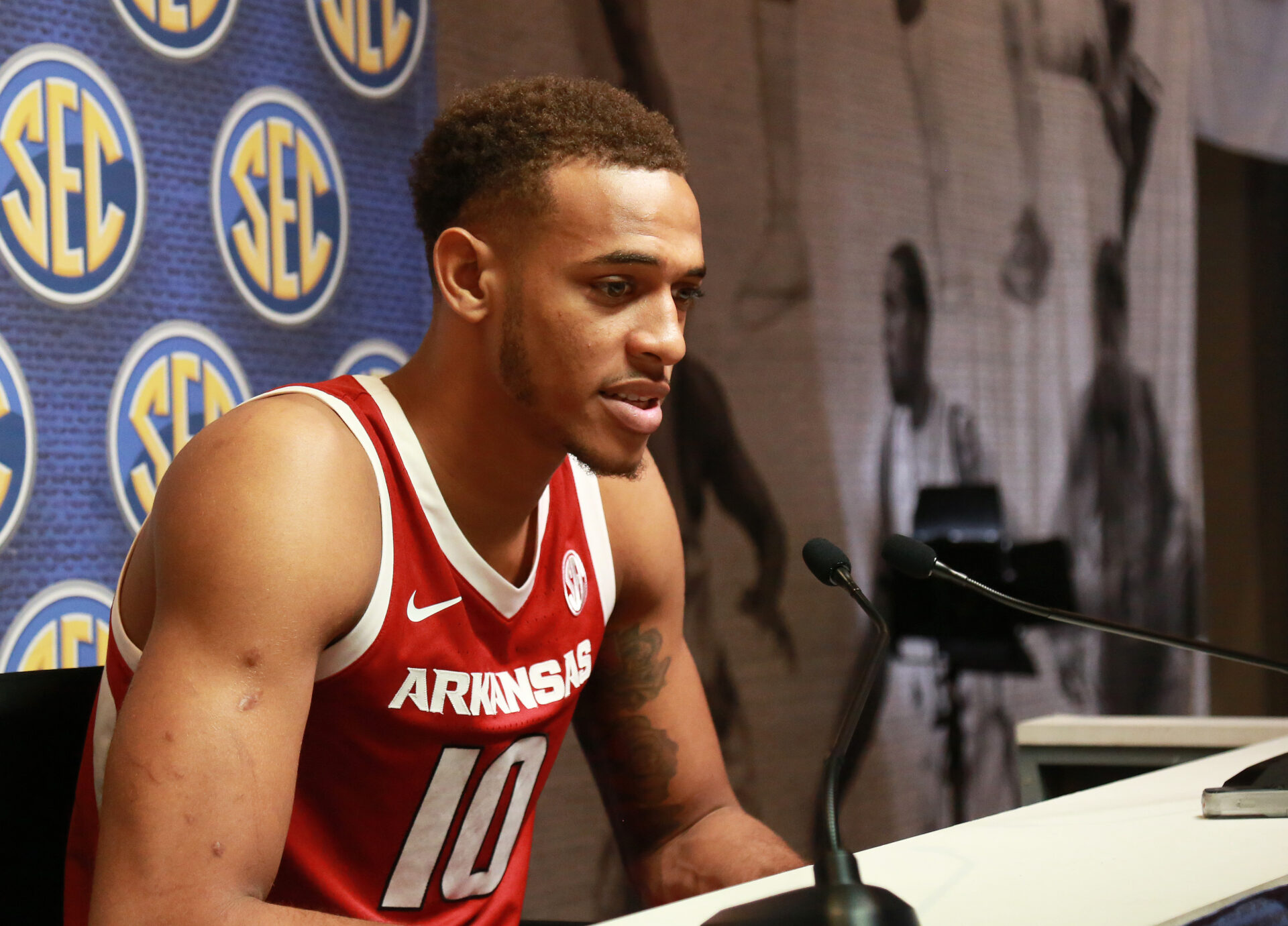
The lone returner averaging double digits on last year’s team is 6-foot-11 Daniel Gafford (11.8 ppg/6.2 rpg), who opted to remain in Fayetteville for his sophomore season and around whom Anderson will build his team. Anderson said in a recent press conference that he is proud of Gafford’s work ethic and leadership in the offseason. The big fella is also getting high praise from the media—being selected to the preseason All-SEC first team—as well as his teammates. “Daniel is on a different level,” junior forward Bailey said. “I’ve never seen anyone work as hard as Daniel Gafford. Day in, day out, off days. Daniel is always working.”
Gafford has potential to be the best big man in college basketball this season.
Complementing Gafford is the 6’6″ Bailey (4.1 ppg, 2.5 rpg), and Gabe Osabuohien (1.1 ppg, 1.4 rpg), a 6’8″ sophomore from Canada, should log more minutes. But who will fill the other slots is anybody’s guess. Jalen Harris, a transfer from New Mexico now two years removed from his freshman season in which he averaged 4.5 ppg for the Lobos, could be the X-factor. Harris sat out last year as redshirt and at least knows what it feels like to step out on the floor for a college basketball game.
Anderson will rely on blue chippers more than any other year in his tenure, as eight new bodies will don the cardinal and white. These include:
Desi Sills, a 6’2″ guard from Jonesboro, Arkansas.
Isaiah Joe, a 6’5″ guard from Fort Smith, Arkansas.
Keyshawn Embery, a 6’3″ guard from Midwest City, Oklahoma.
Ibrahim Ali, a 6’10” forward from Maumelle, Arkansas.
Ethan Henderson, a 6’8″ forward from Little Rock, Arkansas.
Jordan Phillips, a 6’7″ guard from Fort Worth, Texas
Reggie Chaney, a 6’8″ forward from Tulsa, Oklahoma
Khalil Garland, a 6’5″ guard from Little Rock, Arkansas
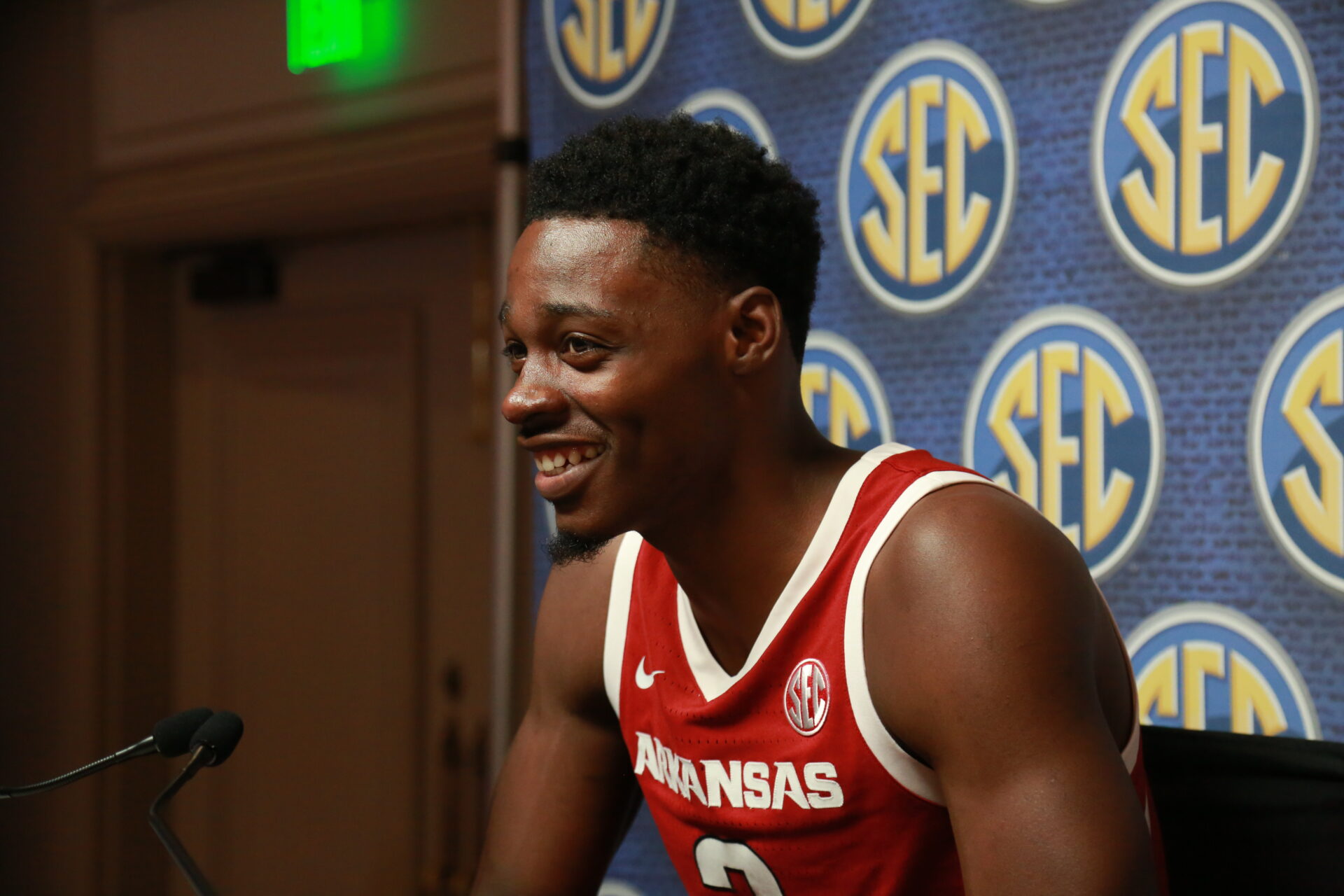
During fall practice, Anderson looks to “expedite” the team’s maturation process and hopes it is as rapid as the Hogs’ style of play, as a tough non-conference slate awaits the Razorbacks in November and December. The Hogs will open up the season on November 9 against the University of Texas in the ESPN Armed Forces Classic held at Fort Bliss in El Paso, Texas. They host Indiana at Bud Walton Arena on November 18 and welcome Georgia Tech on December 19 before the annual buffet of SEC competition.
Although the Hogs consistently improved over the first four seasons of the Anderson era, reaching a high water mark in 2014-15 with a 27-9 record, recruiting has largely been inconsistent. According to Scout.com, the Razorbacks have had Top 20 recruiting classes in only three years (2016, 2013, 2011) under Anderson and finished 105th in 2015, 46th in 2014, and 42nd in 2012. Over the last few years, Arkansas has sent a handful of players to the NBA, including Barford, Macon, and Michael Qualls, but the top recruit of Anderson’s tenure was former 5-star forward Bobby Portis, now on the Chicago Bulls’ roster. And even though last year’s class was a big one, it ranked only 28th overall.
Last year, fans were optimistic that Arkansas could make a deep run in the tournament, but the No. 7-seed Razorbacks were quickly sent packing after the first round, courtesy of Butler. “I’ve got a real disappointed locker room in there,” Anderson stated after the game. “Those guys thought they were a much better basketball team than they put on display today.”
So what is the future for Anderson and Arkansas? Richardson took the Razorbacks to the Final Four in his fifth season. In seven seasons at Arkansas, Richardson’s pupil has failed to take his team past the round of 32. That does not mean Razorback fans are dissatisfied with Anderson, however. Outsiders, perhaps more than most Arkansas fans, expect Anderson to raise the bar to a level equal to Richardson’s, if not higher.
In reality, Arkansas has the basketball tradition and facilities to compete at an extremely high level, but it is a program still recovering from years of mediocrity—similar to LSU football in the 1990s. Anderson appears to still be the guy, and most folks are satisfied with the incremental increases that have stopped short of being meteoric.
For a program that prides itself on being fast-paced, the one thing that hasn’t come quickly is winning in late March. Anything is possible in the current college basketball ecosystem, but for a Final Four or even an Elite Eight run to happen this year would mean that it arrived with the unlikeliest of Razorback teams.
Back in the spring, Anderson asked for patience with this young squad. And that is something most Hog fans seem willing to give him. H&A
Follow Hall & Arena on Facebook, Instagram, and Twitter @talegatesports

